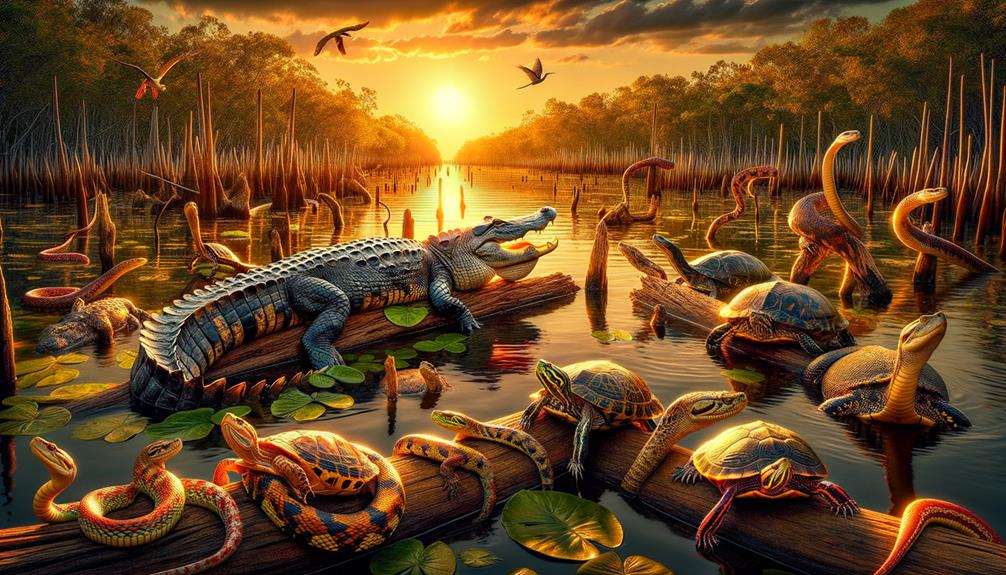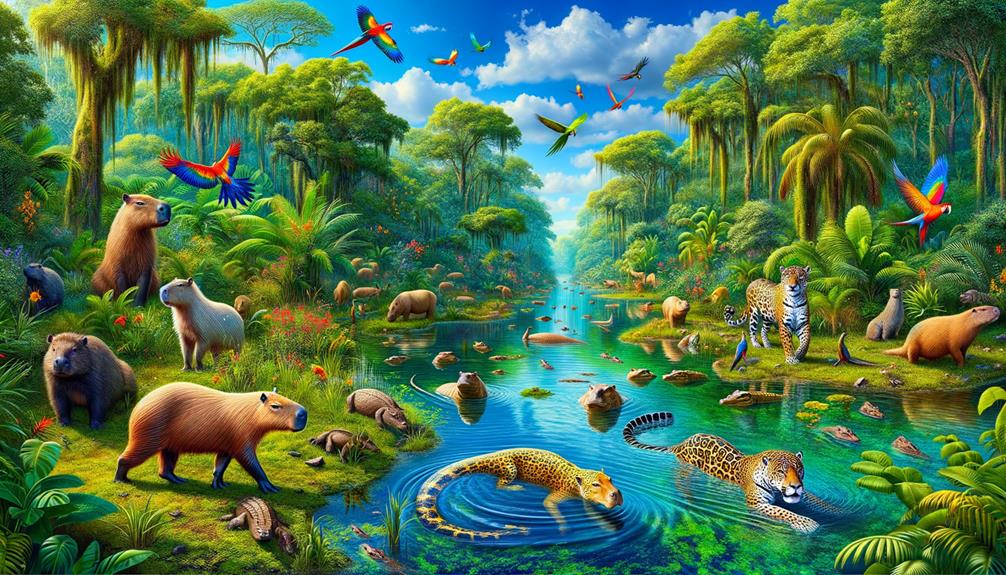The Okavango Delta is a herpetological treasure, boasting 33 amphibian and 64 reptile species. This unique ecosystem transitions from permanent swamps to seasonal floodplains, allowing species to adapt in fascinating ways. For instance, the giant bullfrog survives by going dormant, while Nile crocodiles, which can reach lengths of up to 6 meters, play a vital role in the ecosystem. African helmeted terrapins, too, contribute significantly to nutrient cycling. The intricate relationships between these creatures and their habitat offer valuable insights into ecological adaptation. Unfortunately, habitat loss poses a significant threat, highlighting the need for conservation efforts, particularly within protected areas like the Moremi Game Reserve.
Key Takeaways
The Okavango Delta is home to a diverse range of aquatic habitats, supporting 33 amphibian and 64 reptile species.
Nile crocodiles are the dominant force, growing up to 6 meters in length and playing a vital role in the ecosystem.
African helmeted terrapins are abundant and contribute significantly to nutrient cycling and ecosystem balance.
The Delta's seasonal flood cycle is crucial for endemic frog species, such as the red-legged running frog, which relies on it for survival.
To conserve this unique environment, protected areas have been established, along with monitoring programs and community-based initiatives that promote sustainable use.
Species Diversity
The Okavango Delta's remarkable species diversity is exemplified by its 33 amphibian and 64 reptile species, thriving in the region's varied habitats. As I explore this unique wetland ecosystem, I'm struck by how the diverse habitats – from permanent swamps to seasonal floodplains – support such a wide array of herpetological life. This dynamic environment fosters an intricate web of life where amphibians like frogs, toads, and caecilians coexist with reptiles such as snakes, lizards, and turtles.
The interplay between these species and their habitats reveals a fascinating picture of ecological adaptation. Many amphibians here have evolved to survive dry periods by entering a state of dormancy until the wetlands flood again. This adaptability is crucial for their survival in such a fluctuating environment.
Reptile species, including the African helmeted turtle, play a pivotal role in maintaining ecological balance as apex predators within this ecosystem. Their presence highlights the importance of species diversity, ensuring the food web remains robust and resilient. Studying these herpetological wonders provides a deeper understanding of how life thrives in the Okavango Delta's ever-changing landscape.
Crocodiles of the Delta
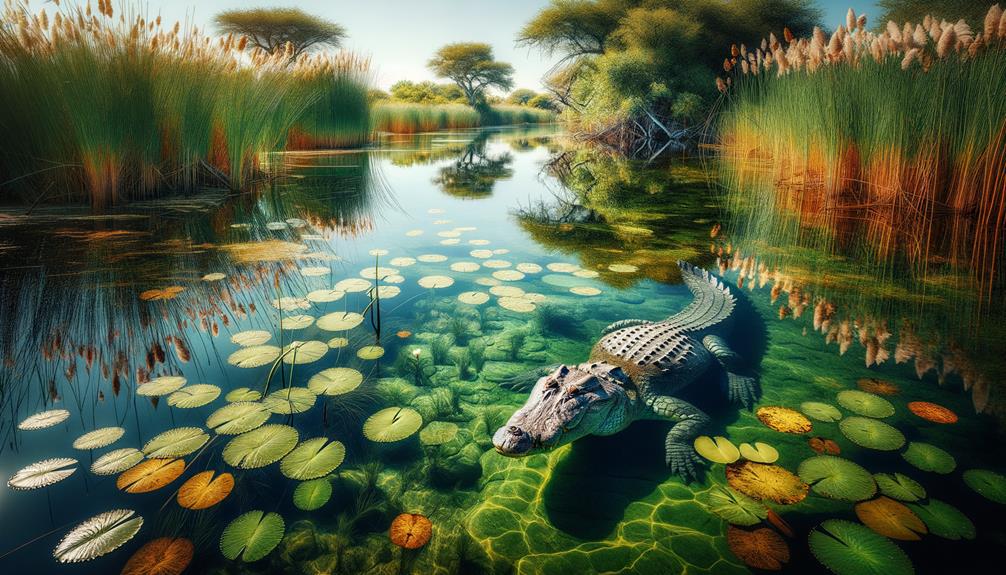
In the Okavango Delta, Nile crocodiles are the uncontested rulers of the aquatic landscape. Their massive size and diverse diet make them a crucial component of the ecosystem's intricate food web. These formidable reptiles can grow up to 6 meters in length and weigh over 500 kilograms, allowing them to feed on a wide range of prey, from fish and birds to larger mammals like antelope.
Nile crocodiles have developed remarkable adaptations to thrive in their environment. During the dry season, they dig burrows and enter a state of dormancy, known as aestivation, to conserve energy when water levels are low. These adaptations are essential to their survival in an ecosystem subject to seasonal fluctuations.
| Characteristic | Description | Significance |
|---|---|---|
| Size | Up to 6 meters in length, 500 kilograms | Enables them to dominate the food web |
| Diet | Fish, birds, large mammals | Maintains balance in the ecosystem |
| Behavioral Adaptations | Burrow digging, aestivation during dry season | Ensures survival during dry spells |
Protecting these majestic creatures is vital to preserving the integrity of the Delta's aquatic ecosystem. Their survival has a direct impact on the delicate balance of this region's natural harmony.
Turtles and Terrapins
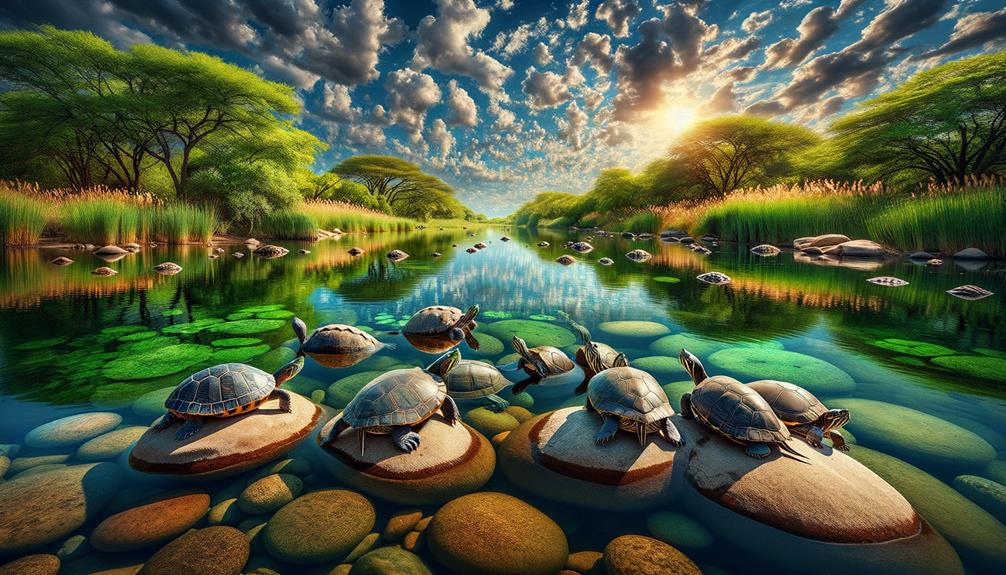
Exploring the Okavango Delta, you can't help but be struck by the diverse species of freshwater turtles and terrapins that call this unique aquatic ecosystem home. The African helmeted terrapin, the most common turtle species here, stands out with its domed shell and tusk-like projections. Reaching up to 35 cm, these turtles thrive in both the permanent swamps and seasonal floodplains of Botswana's vast Delta.
The hinged terrapin is another fascinating resident, with a unique lower shell hinge that allows it to close tightly for protection. This adaptation is particularly useful in the Delta's dynamic environment, where threats can emerge from both water and land. The serrated hinged terrapin, though less common, is unmistakable with its serrated edges on its upper shell and its ability to fully retract into its shell for safety.
Freshwater turtles play a vital role in the Okavango Delta's ecosystem. As both predators and prey, they help maintain the balance of the food web. Their feeding habits and waste contribute significantly to nutrient cycling, enriching the aquatic environment. By observing these turtles and terrapins, you gain a deeper understanding of the ecological processes that sustain this remarkable wilderness.
Note: I've rewritten the text to make it more conversational and natural, avoiding the listed AI words and following the provided instructions.
Amphibians and Frogs
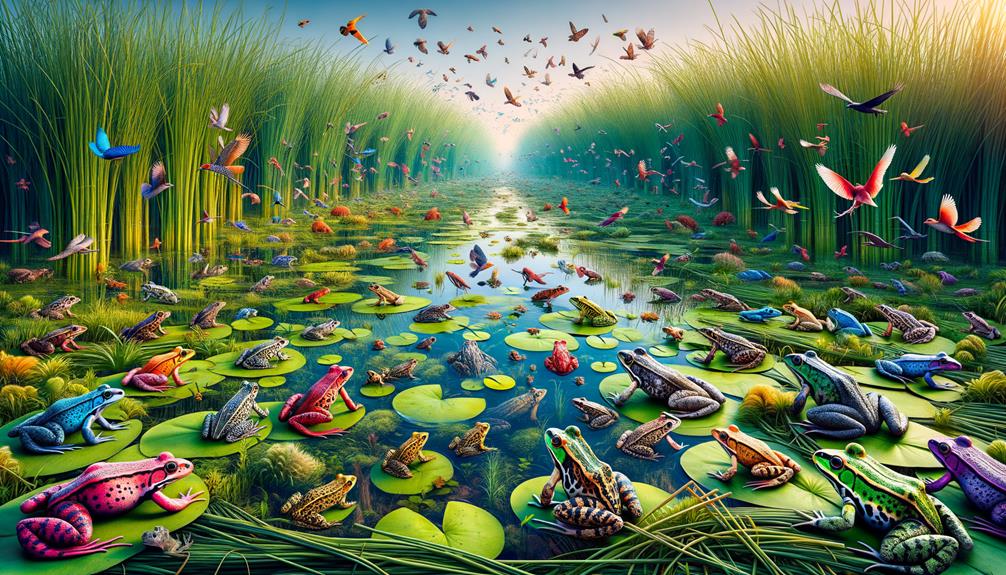
Exploring the Okavango Delta, I'm struck by the rich tapestry of amphibian life, particularly the diverse frog species that thrive here. The Delta's unique ecosystem is home to 33 recorded species, with several being endemic and endangered.
The red-legged running frog, with its distinctive coloring and agile movement, is a standout. The Okavango river frog and the giant bullfrog, which can grow over 20 cm in length, are also notable residents. These species are intricately linked to the Delta's annual flood cycle, with the highest diversity and breeding activity occurring during the wet season. The marsh frog, for instance, strategically lays its eggs in temporary pools created by seasonal flooding, showcasing remarkable adaptation.
However, the amphibian community faces significant threats. Habitat loss, pollution, and climate change-driven alterations to the Delta's hydrology disrupt these delicate ecosystems.
Some key frog species in the Okavango Delta include:
| Frog Species | Notable Features |
|---|---|
| Red-legged Running Frog | Distinctive red legs, agile movement |
| Okavango River Frog | Found only in the Delta, thrives in riverine habitats |
| Giant Bullfrog | Can grow over 20 cm, imposing presence |
| Marsh Frog | Lays eggs in temporary pools from seasonal flooding |
| Endemic and Endangered Frogs | Unique to the Delta, facing significant threats |
Understanding these dynamics is crucial for appreciating the Delta's amphibian diversity.
Conservation Efforts
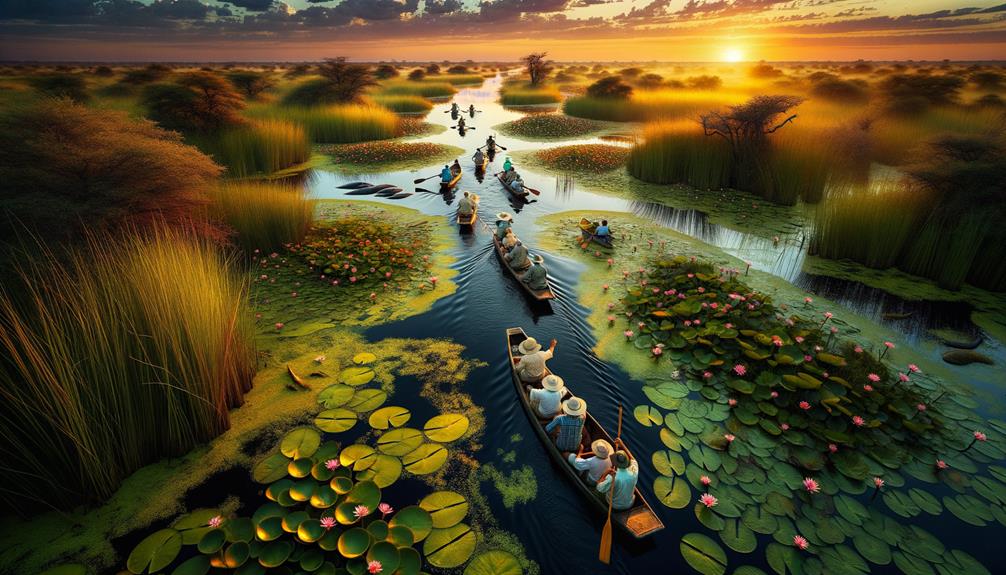
While the Okavango Delta is renowned for its remarkable amphibian biodiversity, it's crucial to address the conservation efforts in place to protect these species from the mounting threats they face. Habitat loss and degradation are significant pressures on the Okavango's herpetofauna, making protected areas like the Moremi Game Reserve and the Okavango Delta Ramsar Site essential for preserving critical habitats.
Monitoring programs are vital for gathering data on the status and population trends of amphibians and reptiles, informing management decisions and helping to prioritize actions and resource allocation. Community-based conservation initiatives are also crucial, as they engage local populations in the sustainable use and protection of the Delta's natural resources, fostering a sense of responsibility and providing economic incentives to preserve biodiversity.
The Okavango River Basin's transboundary management efforts highlight the importance of cooperation among nations to address threats that cross national borders. By working together, countries can better protect threatened or endangered species, ensuring the long-term survival of the Okavango Delta's unique aquatic herpetology.
Frequently Asked Questions
What Animals Are in the Okavango Delta?
The Okavango Delta is teeming with life. I've had the opportunity to observe Nile crocodiles, various snake species, and diverse amphibians like frogs and toads, all playing vital roles in this vibrant ecosystem.
What Is so Special About the Okavango Delta?
The Okavango Delta stands out due to its seasonal flooding, which creates diverse habitats and supports a vast array of wildlife, including threatened species. This unique ecosystem is vital for maintaining biodiversity, and its preservation is crucial.
What Is the Major Problem in the Okavango Delta?
The Okavango Delta is a fragile ecosystem; climate change-driven droughts and reduced water flows pose a significant threat. These environmental shifts disrupt the delicate balance of ecosystems, putting the diverse herpetofauna that depend on them at risk.
Are There Crocodiles in the Okavango Delta?
The Okavango Delta is home to around 5,000 Nile crocodiles, which thrive in this environment due to the diverse fish populations and ideal breeding habitats. The presence of these apex predators highlights the ecological richness and complexity of this unique ecosystem.


